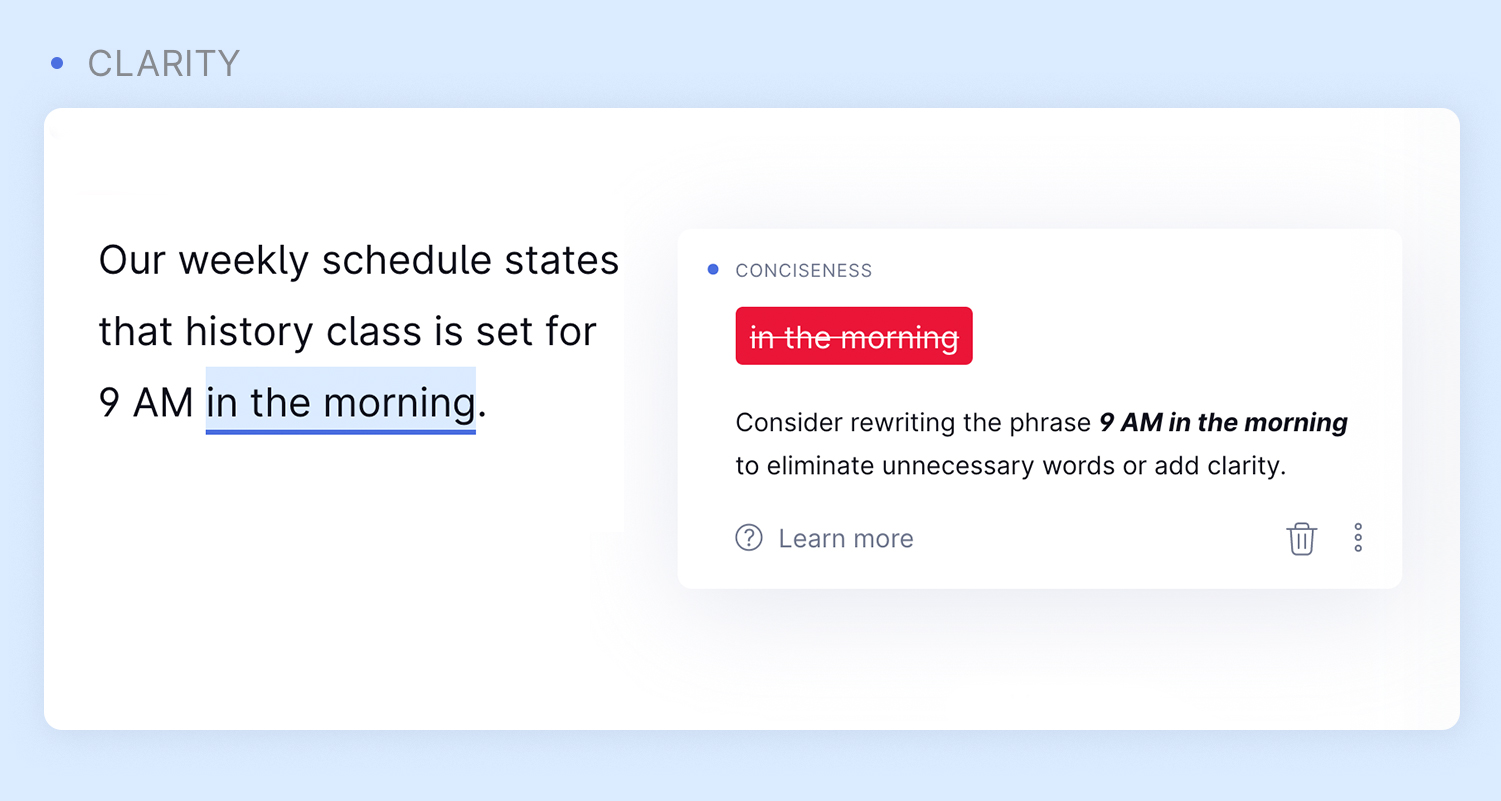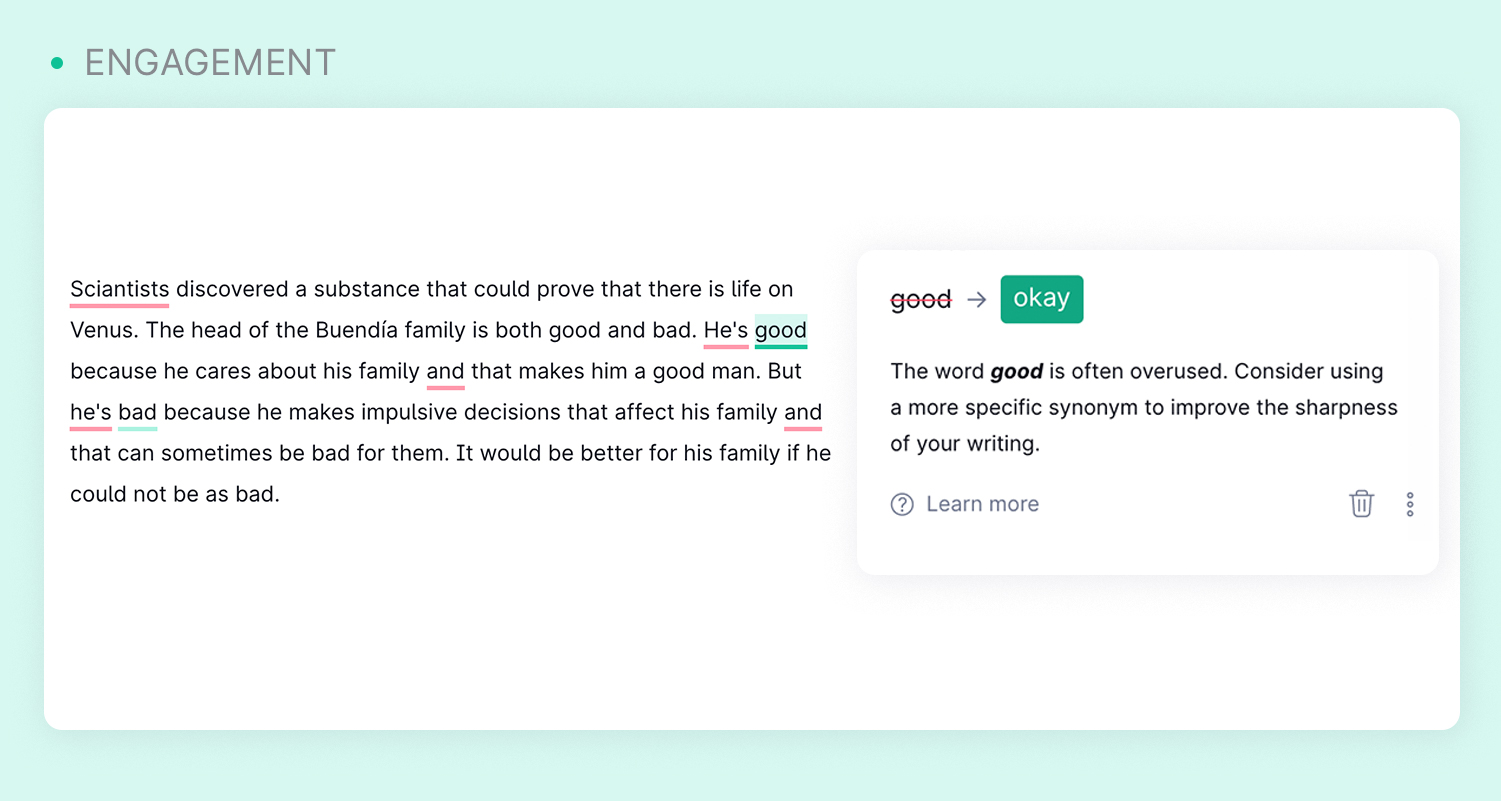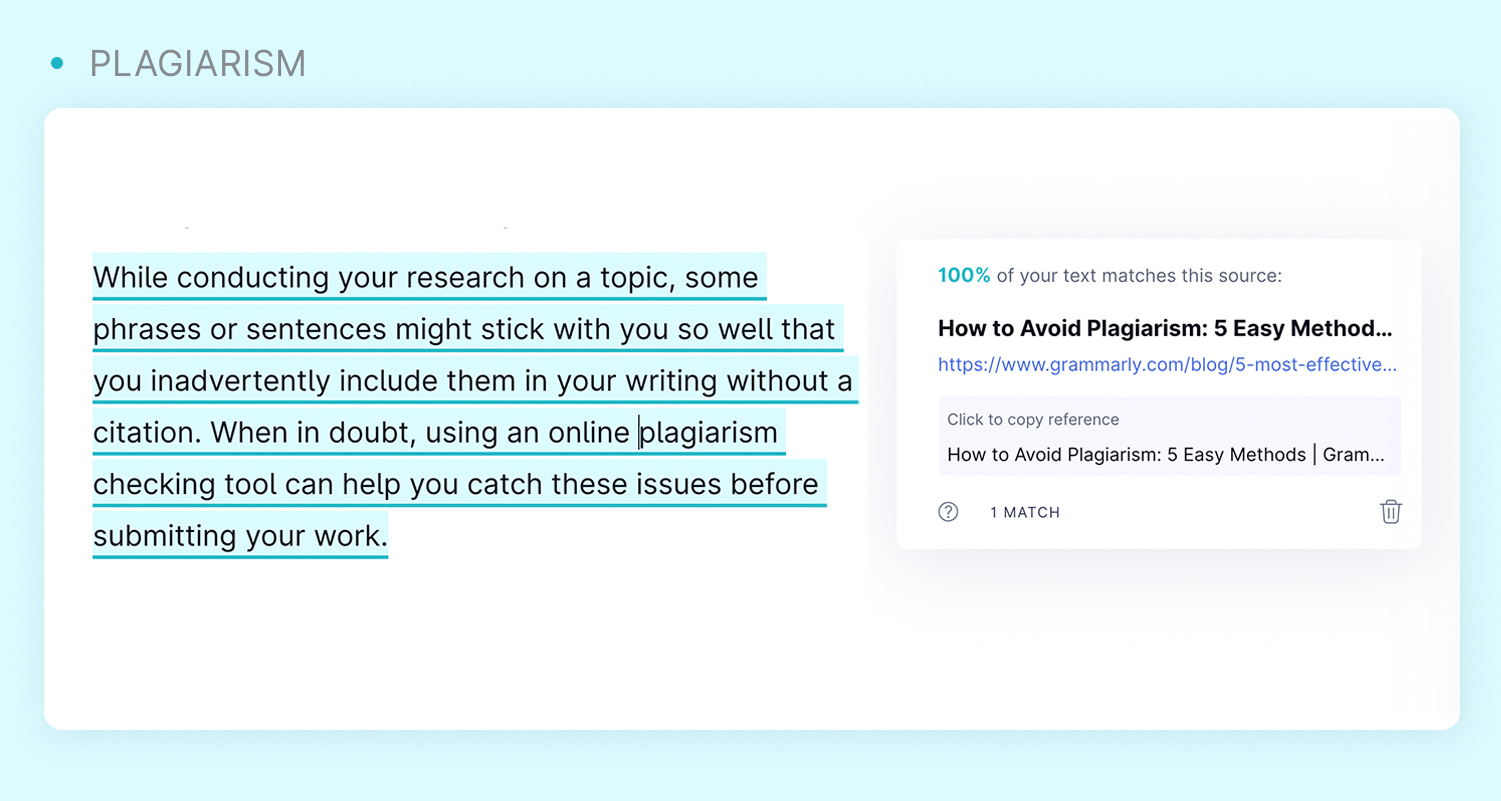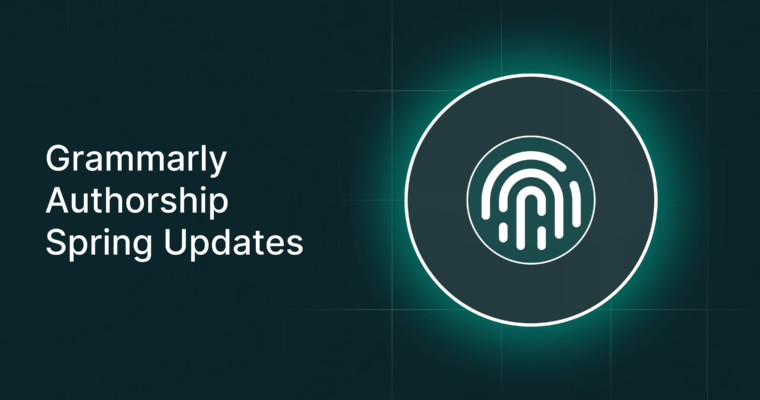
If your child is currently learning from home, you’ve likely added “writing coach” to your roster of responsibilities. And if you’re not a writer or a teacher by trade, it can be really tough to know how to best help your kid improve.
Grammarly can help with that. Running your child’s work through Grammarly Premium, and then looking at the suggestions yourself, can help you filter out which writing skills they need the most help with, and how you can help. Here’s how Grammarly’s suggestions can help you instruct your child.
Check for basic mistakes
Spelling and grammar errors are to be expected when students are learning to write—and Grammarly’s correctness suggestions are built to catch them. But if you see patterns, like your child misspelling the same word repeatedly or making the same grammatical mistake, help them with those patterns specifically. You could come up with a mnemonic to help remember how to spell a certain word or explain why a certain grammar rule works the way it does (Grammarly’s notes in the Editor explain these grammar rules in an approachable way).

Help with word choice and phrasing
Grammarly’s clarity and engagement suggestions can help you teach your child to refine their word choice and sentence structure. Clarity suggestions can help you find unclear sentences and redundant phrases, and help you give feedback to your child on how to clear these things up.

Engagement suggestions can help you find bland words or phrases your child might overuse without even realizing it, and help you and your child come up with alternatives. (Build vocabulary, too, by simply double-clicking any word in the Grammarly Editor to see synonyms!)

>>READ MORE: Why Consistency is Key to Your Writing
Go over proper tone
Your child will encounter a number of different kinds of writing assignments in school. Personal essays, book reports, literary analysis, and persuasive essays are all different kinds of writing with different levels of formality. For a five-page essay, for example, your child’s teacher may not want informal contractions or slang, while that usage might be appropriate in an informal personal writing assignment.
Grammarly’s goal-setting tools and delivery suggestions can help check for different types of tone. Set an audience in the Goals section of the Grammarly Editor, and the text will be checked for tone based on your settings—for example, for a five-page essay, you might set your student’s goals to a Knowledgeable audience, a Formal tone, and an Academic domain. Then the Grammarly Editor can check for tone accordingly, flagging when the text sounds too informal for the intended audience.
Check for plagiarism
Plagiarism has serious academic consequences, no matter what grade your child is in—but they may not know what constitutes plagiarism and what doesn’t. Run your child’s work through Grammarly’s built-in plagiarism checker and, if anything comes up, use it as an opportunity to talk through how to properly cite sources and credit inspiration.

How to help your child learn
Now that you know how specific features can help, here are a few ways to approach giving feedback—hopefully in a way that helps your child feel empowered to improve, rather than feel corrected and disciplined.
Organize your feedback
As discussed, the Grammarly Editor buckets feedback into four categories: correctness, clarity, engagement, and delivery. It also provides explanations for each suggestion, which can help you learn why each one is being made, and in turn help you teach your child. See which category your student has the highest concentration of feedback on and focus on this first. Go through each suggestion with them so they can see how to improve for next time—such as noting down words they commonly misspell or noting when run-on sentences need to be broken up. You can come back to the other categories, of course, but starting with one area that your kid can focus on can avoid overwhelming them.
Print out a report
The Grammarly Editor lets you print out a PDF report of documents edited in the platform. You can print out your student’s writing, just the pages with the underlines, and let them work through why each underline is there, and how they can fix it. Once they’ve done this, you can go through the report together and fix what’s needed collaboratively. This can help your child find ways to track areas of improvement for themselves.
Emphasize a learner’s mindset
The writing suggestions and print-out report help you tackle issues specific to one document, and that can be very valuable in the short-term. Remind your child that writing is always a work in progress and the suggestions you use this time and the next time and so on all serve the purpose of helping them improve progressively. Staying curious and engaged in growing as a writer is all part of the process.






